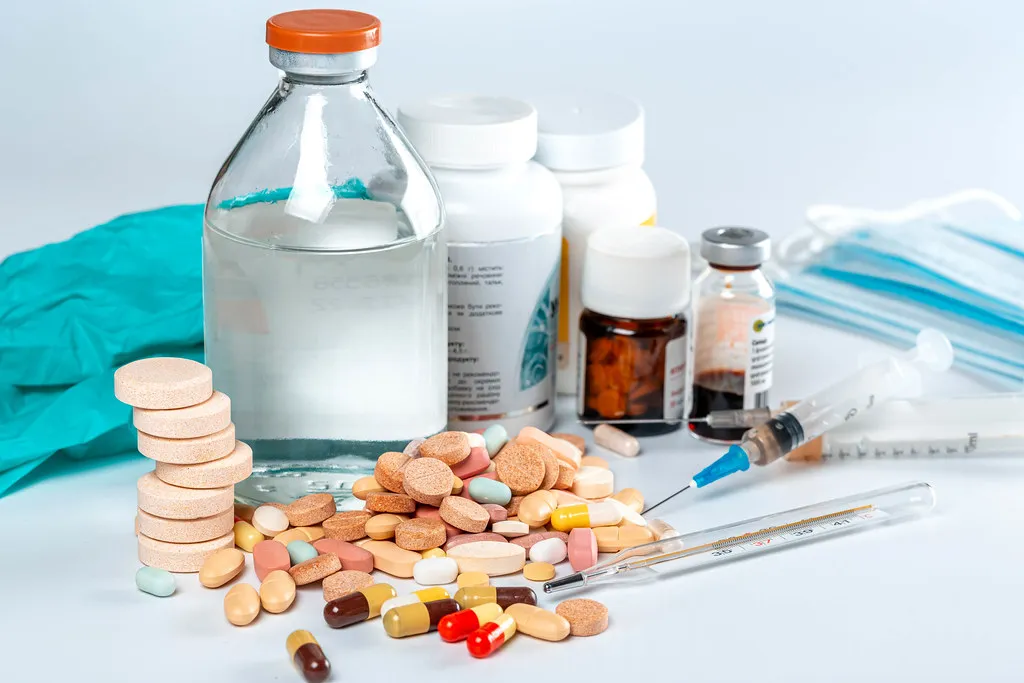Good morning to you great friends, today, I will like to write on Antimicrobial resistance, I don't know how familiar you are with antimicrobial medications, but where I come from it is very common, especially coupled with the fact that self-medication is also very common over here also. Antimicrobial resistance happens when germs like fungi and bacteria, develop the ability to defeat the drugs that have been previously designed to destroy them, so while we take in medications with the aim of destroying these germs, they do not die, rather they continue to grow. Infections that become resistant is a serious cases and sometimes, may even become impossible to treat.

rawpixel.com
Antimicrobial resistance can affect anyone at any stage of life, making it one of the most urgent public health issues, it is an urgent global public health threat as it has been discovered to kill about 1.27 million people worldwide, and it also has associated death cases of around 5 million, in a place like United states, research has it that, over 2.8 million antimicrobial-resistant infections happen every year and over 35,000 people die as a result. cdc
It doesn't take a lot of resistance to different antibiotics or anti-fungal to make it dangerous, it could be even just one antibiotic that the bacteria or fungi are resistant to, that would create serious health crises.
An antimicrobial-resistant infection case that requires the use of second and third-line treatment can possibly harm patients creating serious side effects like organ failure, and prolonging care and recovery which could last for months sometimes. Another point to consider is that lots of medical advances depend greatly on the ability to fight infections with antibiotics, this includes very serious medical cases like; joint replacements, organ transplants, cancer therapy as well as treatment of some chronic diseases like asthma, diabetes, and rheumatoid arthritis. Some infections have no available treatment options.
Now, imagine with me for a second that, antifungals and antibiotics completely lose their effectiveness, which means the ability to treat infections and control public health threats will be lost.
Antibiotics are gradually and increasingly ineffective as drug resistance spreads globally, leading to a more difficult case for the treatment of infections as well as death. As it stands now, new antibacterials are needed urgently according to WHO, if people fail to change the way antibiotics are used, the new antibiotics will suffer the same fate that the current ones are suffering and also become ineffective.
When antibiotics, for instance, get spilled into waterways and soil, resistant strains of bacteria can emerge in an environment as such, they can begin to infect animals and humans that come in contact with them. When antibiotics are used effectively and disposed of appropriately, as well as expired medications, waste from relevant industries will make sure that precious pharmaceuticals stay out of the environment as much as possible and reduce the risk of developing bacteria resistance.

flickr.com
Antimicrobial resistance occurs naturally over time, often through genetic changes, they have the tendency of spreading from one person to another including animals and food of animal origin. These are the major drivers of antimicrobial resistance; the misuse and overuse of antimicrobials, the use of dirty, unclean water, the absence of personal hygiene for both humans and animals, poor infection and disease prevention controls in farms and health care facilities, the lack of access to quality and affordable medicines, lack of awareness and knowledge and the lack of enforcement legislation.
Antibiotics actually work by curing sickness and germs like bacteria that evolve to survive, antibiotic functions through the limiting or the killing of the growth of the bacteria that make animals and humans sick. But, bacteria are really good at adapting to their environment as time goes on. At every point we get to use antibiotics, bacteria also get a chance to develop resistance, this is not to say we should be scared of using antibiotics, we must only learn to use them efficiently.
The Solution.
In the animal sector, several measures can be taken by farmers, aquatic animal producers, pet owners, and other relevant professionals to ensure that these medications are utilized responsibly and remain effective even in the future.
For animals, ensuring good management practices focusing on the prevention of diseases, as well as the responsible use of antimicrobials will do a lot of good, with this, we can collectively limit the development of antimicrobial resistance and then protect the efficacy of antimicrobials for the generation of both animals and humans to come.
Antimicrobial resistance also requires a united multi-sectoral approach, this health approach combines multiple sectors and stakeholders together, these professionals are engaged in human, terrestrial, and aquatic animals and plant health, food and feed production, and also the environment, all these experts come together to communicate and work together in the design and the implementation of policies, programs, legislation, and research to achieve better public health outcomes.
For individual consumers, the prevention and control of the spread of antibiotic resistance can be done through the following of these measures;
To use antibiotics only as prescribed by a proper health care professional.
Always wash hands appropriately and prepare food in a hygienic way, avoiding close contact with people who are sick.
To never share and never use leftover antibiotics.
To practice safe sex, and keep vaccination up to date.
Never demand antibiotics when your health care professional says you don't need them.
Prepare meals only following hygienic procedures.
Health professionals also have a strong way to prevent the spread of antibiotic resistance;
By ensuring that their hands, instrument, and environment are always clean.
By reporting antibiotic-resistant infections to surveillance teams.
By speaking to patients about how to prevent infections, like the importance of vaccination, washing hands, the practice of safe sex, and covering the nose and mouth while sneezing.
By speaking to patients about the side effect of the wrong usage of antibiotics.
References.
https://www.who.int/news-room/fact-sheets/detail/antibiotic-resistance
https://www.who.int/news-room/fact-sheets/detail/antimicrobial-resistance
https://aricjournal.biomedcentral.com/
https://www.who.int/news-room/fact-sheets/detail/antimicrobial-resistance
https://www.ncbi.nlm.nih.gov/pmc/articles/PMC4768623/
https://www.thelancet.com/journals/lancet/article/PIIS0140-6736(21)02724-0/fulltext
https://www.woah.org/en/what-we-do/global-initiatives/antimicrobial-resistance/
https://www.cedars-sinai.org/health-library/diseases-and-conditions/a/antibiotic-resistance.html